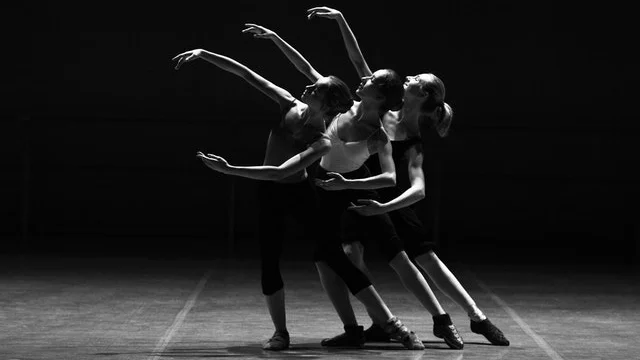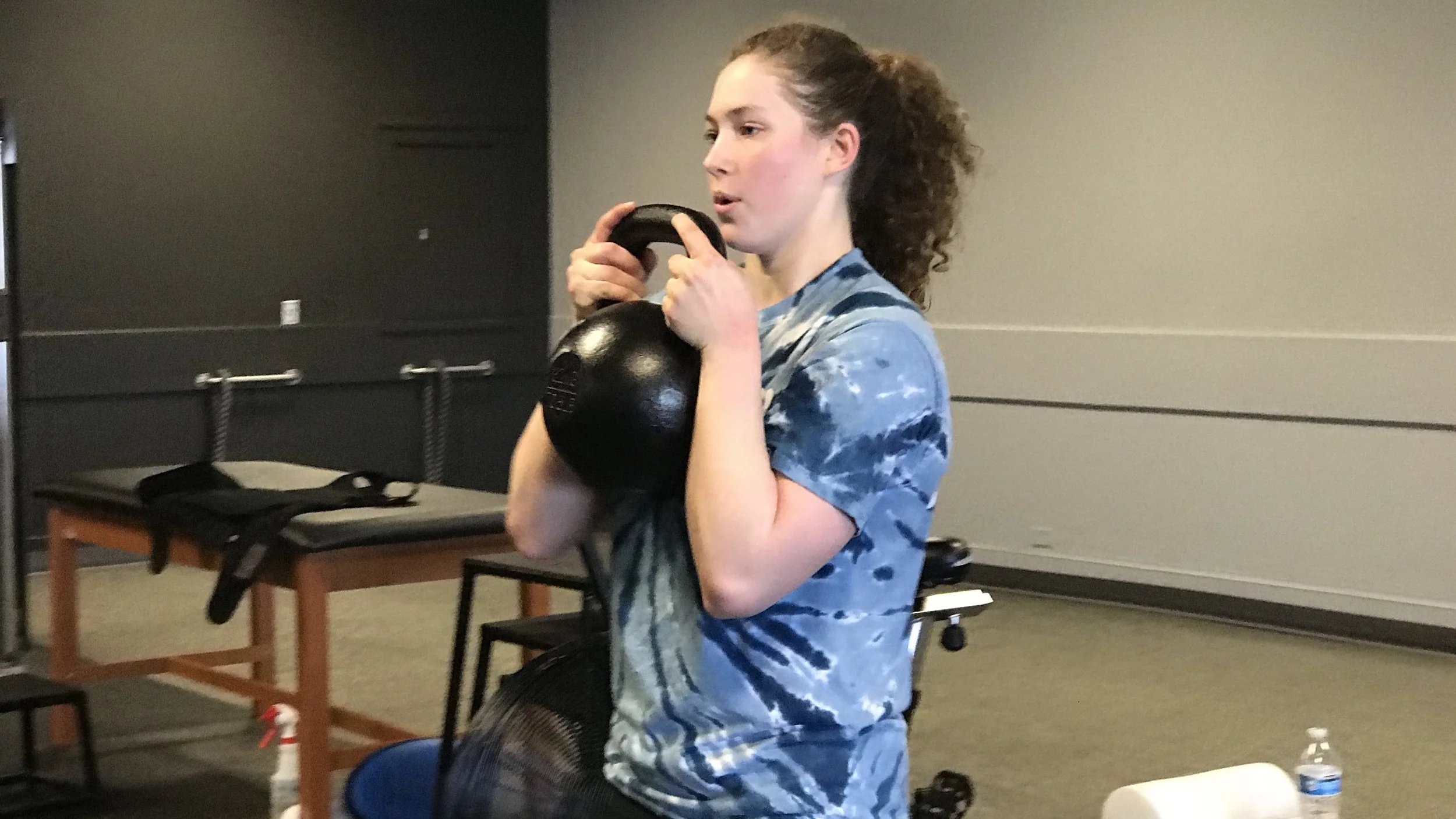Elon is one of the most innovative entrepreneurs of our time, maybe ever. Some people love him and others hate him. What you can't deny is what he has accomplished. Starting Tesla and SpaceX, almost at the same time, is an insane feat to try, let alone successfully accomplish. So, it stands to reason he may be able to teach us all a thing or two.
Improve the Movement, Don't Just Mimic the Sport
When you do a search of swim dryland exercises or look on social media, you always find the same thing - exercises that look like swim strokes. At the surface, this seems like it would make sense. Mimic the exercise on land, but add weight or a band to it, and it should improve the stroke. As it turns out, doing a stroke in the water is very different from doing it on land.
Why Swimmers Often Get Tight Upper Traps, Part 2
Previously, we discussed the idea of tight upper traps due to them being overly lengthened. This is very common in not only swimmers, but a lot of other athletes, too. If you haven't read part 1 yet, you can find it on our blog. Today, we're going to discuss why upper traps get tight for the a different reason: they're always "on." Bear in mind, a muscle can feel tight for generally two reasons: 1) the muscle is overly lengthened, or 2) the muscle is always on. Part 1 covered the former, and now we'll cover the latter.
Why Swimmers Often Get Tight Upper Traps, Part 1
Pull-ups vs. Chin-ups For Swimmers
I recently got a question on our preference of either pull-ups or chin-ups for our swimmers, and my initial response was that I like both, and it just depends on an athletes evaluation and program, as well as where they are in their season. After thinking about it more, it seemed like a good post idea because there is more that we can discuss.
Two Relatively Unknown Muscles That Are Key To Shoulder Health In Swimming
We all know swimmers have to be strong. By nature, swimming is resistance training. Every time a swimmer moves through the water, that swimmer is moving against water resistance. So, it stands to reason that muscles like the lats, pecs, and quads need to be strong. The muscles we’re discussing here are not the pecs, lats, or quads, though; they’re the serratus anterior and the subscapularis. These two muscles are the common culprit of shoulder pain in swimmers. Learn how we address these two muscles to keep our swimmers pain-free and fast in the pool.
Swimmer’s Shoulder: What It Is and What To Do About It
By far, the most common musculoskeletal complaint in the swimming population is shoulder pain. This should make a lot of sense as the repetitive overhead nature of swimming doesn’t allow much room for error. For example, an elite freestyle swimmer can take anywhere between 20 and 25 strokes every 50 meters. Let’s say you train 7,000 meters per day; that’s between 2,800 and 3,500 strokes every single day. If that same swimmer trains six days per week, that’s as many as 21,000 strokes per week and nearly 1,000,000 in a year. One stroke is not typically going to cause an injury, but this many reps, over time, certainly can.
Three Essential Exercises for Better Starts and Turns
As it turns out, the difference between first and eighth place can highly depend on how well a swimmer starts and executes his or her turns. Swimmers can achieve their fastest speeds off the start, so being strong in this area can be a game-changer in boosting performance and gaining an advantage over competitors. Turns are crucial to performance as well with the underwater phase making up as much as 30% of the distance covered in a race (1).
Four Key Assessments For Swimmers
The swimming population has been our fastest-growing demographic, so we've had a decent amount of assessments within the last year. At Achieve, we're big on assessing, and not on guessing. When we get a swimmer in the door, there are a whole host of things we're looking for. A thorough assessment should include both general and specific components.
A Longer Dance Career With Less Injuries? You Bet.
Strength and conditioning training isn’t just for the typical sports like basketball, soccer, or football. It’s for all athletes, dancers included. This is an often overlooked area in many dancers training, but it really shouldn’t be!
The athletic components of dancing like jumping, landing, and holding positions are all made easier and better with a solid strength training program focused on perfect technique.
The problem is the benefits and techniques of strength training simply aren’t taught in the studio.
Strength and conditioning can easily:
- Improve joint mobility
- Reduce injury rates
- Improve postural alignment
- Increase core and general muscle strength
- Balance muscular imbalances associated with repetitive dance training
It’s true - you can’t just dance. There’s a reason why other athletes include strength and conditioning in their training for sports. It makes them more athletic and better athletes.
Now, let’s dispel some of the common myths associated with strength training that tends to hold most dancers back, starting with the most prevalent one…
Myth #1: Strength training will make you big and bulky.
This is easily the most common misconception we see with almost all female clients, not just dancers. The truth is nobody gets muscular and bulky by accident. Even for the most successful bodybuilders, it takes an incredible amount of time, effort, resources, and commitment (and sometimes hormones) to look the way they do. Everything from nutrition to sleep to multiple training sessions per day all have to be carefully calculated and planned.
Supplemental strength and conditioning training done one to (ideally) two times per week is certainly enough to reap the rewards of training, but not enough to cause large increases in muscle mass. This is especially the case for female athletes since males have roughly 16 times more testosterone, one of several key muscle-building hormones.
Myth #2: Strength training will make you less flexible.
What if I told you that strength and conditioning can actually improve and maintain flexibility? It’s true, but unfortunately, much of the dance community is either intimidated by strength training or they believe it could be detrimental. It’s unfortunate as they’re definitely missing out.
A component of this involves the idea that strength training will make you lose range of motion, but this couldn’t be further from the truth. In reality, strength training through a full range of motion not only can make you maintain or even improve flexibility, but it also can allow you to better control the range of motion you have. Sound like it could benefit a dancer? Absolutely.
A 2017 study in the Journal of Strength and Conditioning Research found a nine-week strength training program significantly improved dance performance (1). Of all of the parameters measured, the most impactful included core strength, muscle balance, control of joint while jumping and landing, and flexibility. In the authors’ words, “It is recommended that dance schools consider utilizing...strength and conditioning coaches that can deliver systematic resistance training to adolescent dancers.”
Another study done in 2011 found similar gains in flexibility between a group completing full range of motion strength training exercises and traditional static stretching (2).
Myth #3: I don’t have the time to fit strength training in my schedule.
Let’s face it, we’re all busy. Young and old, we all have busy schedules and seemingly not enough time for a lot of stuff. Luckily, you don’t need a ton of time to make some great progress following a strength training program.
Our most successful athletes train with us twice per week for one hour. That’s it. We’ve had unbelievable success getting our swimmers faster times, our baseball players faster throws and swings, and our basketball players better jumps. It truly doesn’t take a lot of time.
In fact, the 2017 study referenced above only involved two training sessions per week. Several other studies also included twice per week training sessions with substantial results (3,4). Simply put, 120 minutes of strength and conditioning per week can make a substantial difference in dance performance.
Wrap Up
Clearly, dance, just like any sport, can be greatly improved through strength and conditioning training. While there are many common misconceptions around training outside of dance, it can be just the improvement needed to take dance performance to the next level.
Have some questions?
To learn more information about our services, please visit our Athletic Development page. Otherwise, feel free to send us an email at Contact@Achieve-PersonalTraining.com or just visit our Contact Us page to send over any questions or comments you may have.
References
Dowse, R., McGuigan, M., & Harrison, C. (2017). The effects of a resistance training intervention on strength, power, and performance in adolescent dancers. Journal of Strength and Conditioning Research, published ahead of print.
Morton, S., Whitehead, J., Brinkert, R., & Caine, D. (2011). Resistance training vs. static stretching: effects on flexibility and strength. Journal of Strength and Conditioning Research, 25(12), 3391-3398.
Brown, A., Wells, T., Schade, M., Smith, D., & Fehling, P. (2007). Effects of plyometric training versus traditional weight training on strength, power, and aesthetic jumping ability in female collegiate dancers. Journal of Dance Medicine, & Science, 11(2), 38-44.
Koutedakis, Y. & Sharp, N. (2004). Thigh-muscles strength training, dance exercise, dynamometry, and anthropometry in professional ballerinas. Journal of Strength and Conditioning Research, 18(4), 714-718.












